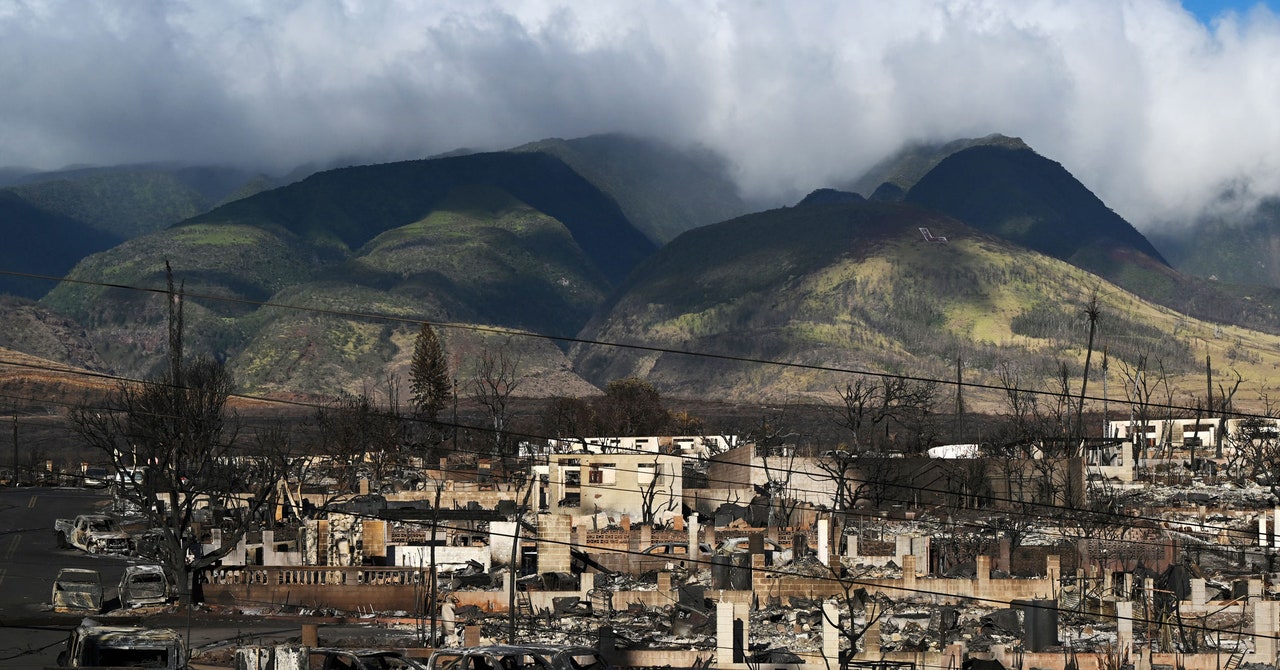
Winds blowing at 60 miles an hour not only push the flames along, they also help start new fires. Wildland firefighters on the US mainland regularly struggle with embers blowing miles ahead of the main blaze, starting new ones downwind. The same likely happened across the town of Lahaina, making it impossible to stamp out all the new fires. “That’s probably how most of the fires started, from embers accumulating,” says Minassian. “You can see it in some of the pictures there—they show embers all over the place.”
It is exceedingly difficult to predict where winds might drive a fire, because wind is an exceedingly complex phenomenon. It interacts with the landscape in granular ways: It moves differently over grasslands than it does through wooded areas, where it flows between trees. “How is the wind channelized in the gap between two trees? Believe it or not, that actually matters a lot,” says UC Irvine atmospheric scientist Tirtha Banerjee, who studies how wind influences wildfire. “That has an impact on how the fire burns.” And once those winds reached the town of Lahaina, they poured between buildings in complicated ways, further confounding predictions for where the fire might spread.
Climate change is clearly worsening wildfires due to hotter temperatures and gnarlier droughts, and scientists are now trying to work out how it might tweak the way winds flow. “There’s a lot more uncertainty because wind is so local, and the small-scale variations on the land surface can really change the patterns,” says Banerjee. “Mountainous terrain can create this little local recirculation that can actually make your fires more unpredictable.”
Indeed, fire behavior—the dynamics of how wildfire spreads across the landscape—is getting increasingly chaotic due to the combination of climate change, accumulated fuels, and wind. That’s making wildfires increasingly difficult to fight. “We’ve been seeing a lot of really strong, erratic winds that can just make these fires go from something manageable to something that completely levels a town,” says Kaitlyn Trudeau, a senior research associate of climate science at Climate Central, who studies wildfires. “It’s been really deadly for a lot of firefighters, who have actually gotten encircled by fire because the winds are just blowing in a way that causes a fire to burn around them into a circle.”
Part of the problem is that as supercharged wildfires get bigger and more intense, they start to create their own wind. Fire produces columns of hot air that rise into the atmosphere—sometimes so much of it that smoke thunderclouds form, creating lightning that sparks more fires. As that hot air ascends, air from surrounding areas rushes in to fill the void, creating additional wind. “It’s not like the fire is only responding to the winds, but the fire itself—because of the heat—actually changes the winds,” says climate scientist Ruby Leung, of the Pacific Northwest National Laboratory. “All of this can be very complicated if you want to predict where the winds are blowing.”
There’s simply no controlling the wind—but there are ways to tackle the other drivers of wildfires. In the big picture, humanity needs to dramatically reduce carbon emissions to slow climate change. And in the near term, people need to get better at managing overgrown and dead vegetation, like with controlled burns, so wildfires won’t have the fuel they need to burn out of control. You might have 60-mile-per-hour winds, and you might get a spark from downed electrical lines, but there won’t be enough tinder for a fire to turn into a city-obliterating conflagration.
“We’re seeing fire seasons getting longer, and we’re seeing fire behavior getting more extreme,” says Minassian. “That makes it more difficult to try to suppress. And we need to start thinking about evacuation plans, defensible space, things that communities and homeowners can do to minimize the threat of wildland fire.”

